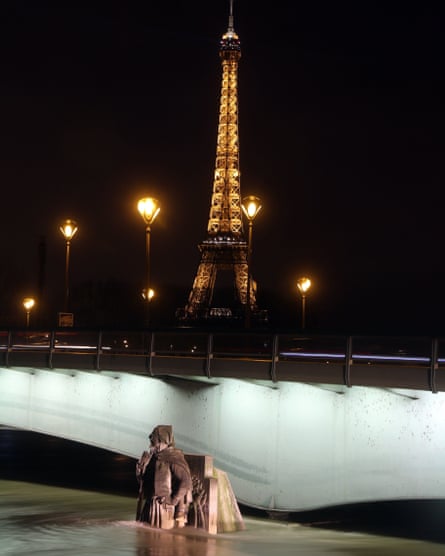The swollen Seine has peaked at more than four metres above its normal level, leaving a lengthy mop-up job for Parisians after days of rising waters.
The river rose to 5.84 metres (19.2ft) early on Monday morning, causing problems for commuters as well as people living near its overflowing banks.
The Vigicrues flooding watchdog said the river would stay at its current level throughout the day before beginning to recede on Tuesday.
Around 1,500 people have been evacuated from their homes, according to police, while a similar number of properties remain without electricity.
The capital’s famous Bateaux Mouches rivercraft service was suspended and only emergency services were authorised to use the river.
The Seine did not quite reach its 2016 high of 6.1 metres, when priceless artworks had to be evacuated from the Louvre.
But the world’s most visited museum was still on alert on Sunday, along with the Musée d’Orsay and Orangerie galleries, with the lower level of the Louvre’s Islamic arts wing closed to visitors until at least Monday.
A statue of an Algerian French army soldier from the Crimean war known as a Zouave that has guarded the river at the Pont d’Alma bridge in central Paris since 1910 was drenched up to its thighs in the muddy waters.

“Fluctuat nec mergitur [tossed but not sunk] but it’s cooold,” the Zouave statue tweeted from an account set up in its name by an anonymous admirer, using the city’s Latin motto.
Police again warned against bathing or canoeing in the river, saying it was “forbidden and extremely dangerous”.
More favourable weather is expected for the week ahead, but even once the water levels start to recede forecasters and officials say it will be a slow process, as much of the ground in northern France is already waterlogged.
“If we’re talking about things getting completely back to normal, that’s going to take weeks,” said Jérôme Goellner, regional head of environmental services.
The December-January period is now the third wettest on record since data collection began in 1900, according to France’s meteorological service.
A main commuter line, the RER C, will not stop in the city until at least 5 February, and some expressways that run alongside the Seine have been closed.
However, fears of flooding like that seen in 1910, which saw the Seine rise to 8.62 metres and shut down much of Paris’s basic infrastructure, appeared unfounded.
In the city centre, the Seine flows through a deep channel, limiting the potential flooding damage.
But several areas on the city’s outskirts were underwater, including the southern suburb of Villeneuve-Saint-Georges, where some residents were getting around by boat and dozens have been evacuated from their homes.
